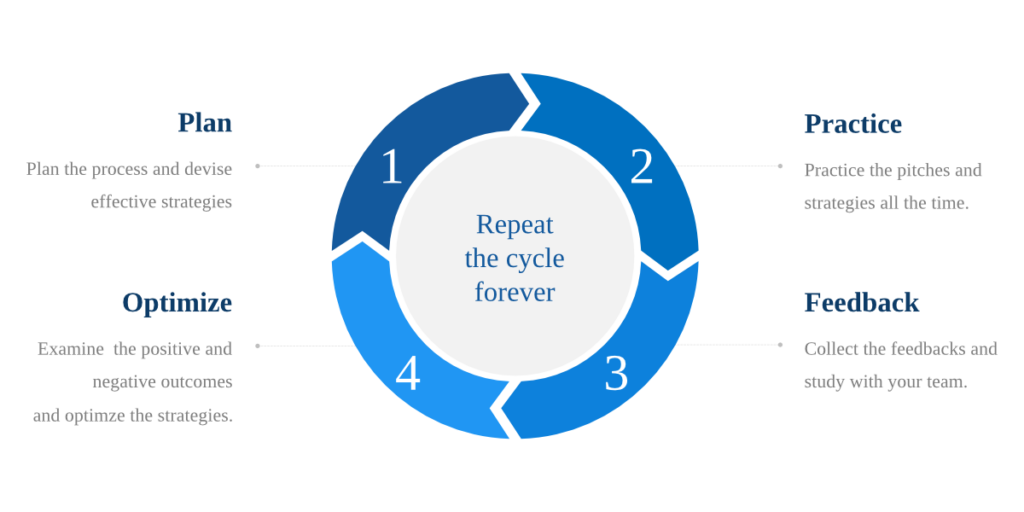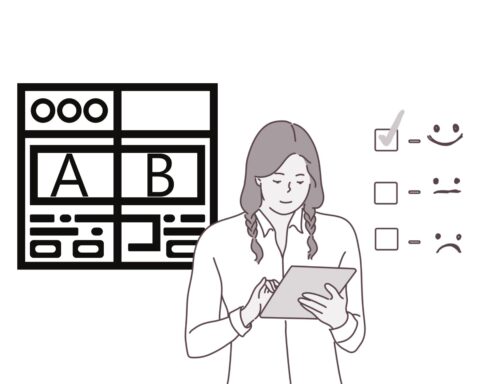Two things never end: the normality of potential customers’ sales objections without understanding at the beginning, and salespeople know it. Both are eternally unchanging judgments.
That’s what makes things complicated and stressful. And the fact that consumers are being exposed to advertisements, insistent calls, text messages and emails throughout the day does not make this any easier.
In such a world, how will you get potential customers to listen to you and manage to sell your product or service?
As an exporter, it’s not always easy to be able to keep a healthy conversation with a prospect from a different country. It becomes more and more difficult especially when you are not speaking the same language. Then you start speaking English in an effort to communicate in a common language and hope the other end of the line speaks English too.
While pitching is already difficult alone, exporters also have to deal with communication challenges that limit their competence and potential. Yet, it’s quite possible to talk the prospects into closing the deal using smart tactics below.
Why they object
Before devising strategies to overcome the sales objections, you need to understand why people object in the first place. What lies behind the reaction to a stranger approaching you out of the blue?
Back in ancient times, it was protecting yourself from getting killed. Now, in the modern world, kill turned into rip off/swindle/fraud/steal/hack and so forth.
In our case, let’s assume that the prospect does not feel in danger but is reluctant to say yes. So, why would they object in the first place?
- They never accept anything directly
- They don’t understand the value
- They’re testing you
- They do it instinctively
- They know you’ll come again with a discount
- They are not open to a new supplier
- They are price-shopping
- You’re not talking to a decision maker
- They don’t like your approach. Too aggressive, too insistent, too…
We can count quite more reasons than these. These reasons actually show us how we should approach the prospect conveniently. So it’s pretty much clear where we should start. Just try to understand it correctly: why did they object? Without knowing why they actually reject you, you cannot proceed with the communication.

What they object
- The price is the problem. They can’t afford it or that’s what they say.
- It’s not a good time for it.
- They actually do not need.
- They have never heard about you before.
- There are other offers
- The product doesn’t appeal to them as it is
- They are not ready or willing for a change
Above all things, I can say that sales is about finding the right people for your offer. When you qualify the leads correctly, the rest is just up to your sales skills and external factors.
As such, qualifying the leads correctly doesn’t bring you the absolute success.
No matter how much they need or will be interested in your offer, don’t take them for granted. They will not accept your offer right away. You’ll have to fight a bit.
Here is how you can overcome sales objections:
Get Prepared
As a first step, build your prospects list and make sure that you qualified your leads correctly. This is a huge step to success.Because you’re building a list of people waiting to be convinced.
You should handle the qualification process from both sides: Are you the right match for the prospect? and Is the prospect the right match for your company?

Know your domain
To be successful in a hyper-competitive world, it is necessary to approach things from a holistic perspective. That’s why you need to equip and update yourself to be prepared for all internal and external factors.
You should know everything about your own company. You should know your competitors, your industry and your product very well. This requires extensive work, but in the end it pays off.
The most used methods in this study are the SWOT analysis of competitors and customers. By obtaining detailed information about competitors and making SWOT analysis, you can reveal your competitive advantage against them and use this advantage in convincing your customers.
It also shows how you differ from your competitors. Thus, you bring yourself in front of your prospects with a concrete and original value proposition.
On the other hand, SWOT analysis of prospects provides benefits in many ways. By identifying their weaknesses and threats, you identify their pain points and offer how to solve them.
By giving advice on how they can use their opportunities, you clearly state what role you will play in this journey and what kind of contribution you will make to the process so that the customer clearly understands what you offer them and your role here.
Thus, you both eliminate the points where you are disadvantaged against your competitors and convince the customer that you are worth trying even when the disadvantages exist.
As a result, you strongly defend, represent and express yourself, your company, your brand, and your value proposition when you know your domain well.
During the conversation
Whether it’s a call or a meeting at the prospect’s office, there are 4 crucial points you should remember during the contact.

Energy
As a rep whose job is to be rejected all the time, just stay calm and spread a positive energy around. Make them see that you’re comfortable, and expect a rejection which might never come, but do feel yourself in a very positive energy.
Use your body language:
- Approach as a friend.
- Keep your hands visible
- Have a smiley face. But don’t give a fake smile.
- Make eye contact.
According to a common saying, you should pause a few seconds after the prospect’s objection instead of jumping into defense mode or continuing your pitch as if nothing happened.
Although it didn’t make much sense back then, I wanted to see this in practice and tried it. And it really helped. It compelled the prospect to have to make an explanation about what he was objecting to. Of course, that wasn’t what got the prospect to say yes, but it did help the process. So it’s worth a try for you too.
Listen as hell and collect the clues
Listen to them as you are actually listening and don’t cut them off early. They shouldn’t get the sense that you’re preparing for your next words as they talk. This means you are being disrespectful, even when you are not.
So it’s wise to not jump into the defense mode and interrupt immediately. Listen and speak after a short while.
Hearing their objections will teach you a lot.
- You will learn common objections to your offer. Jot them down for future meetings, so you can get prepared for more possible sales objections.
- Secondly, it will help them feel like you’re genuinely listening to find a point to help. Remember that you’re there to actually help, not trick them into buying something that they do not need or will regret.
- They may not tell you the real reason behind. That’s why you should really listen and read between the lines. This way, you can find the real objection.
After you’ve collected the clues between the lines, now you can speak. Ask a few questions to explore the objection further. You can start with interpreting their words from another angle and ask if you have fully understood it.
Throughout the conversation, make sure that your questions are open-ended. The more they talk, the more details you get, the more you understand, the better you learn their pain points. And in the end all their needs are clearly visible.

Respond
After you’ve clarified the prospect’s pain points, concerns, needs and whether you have the solution for them, summarize their objections with a few sentences and explain how your offer can help them in detail.
There will most probably be some demands in terms of function, feature or design of the product, price, delivery terms, payment terms, after-sales service and so on.
If you can handle them without asking anyone in the company, just handle them. If not, set another meeting together or ask time to get back to them asap.
Confirm
After resolving all the points in question, state again the objections, the solutions brought by you, adjustments and other agreed points. And finally, confirm if everything is in order to close the sale.
Common Sales Objections

Price is high
The price is the most common objection raised by prospects. You hear these answers all the time:

This happens all the time. But if they weren’t really interested in my offer, they wouldn’t have bothered to reply to my email. They’re just trying to find common ground.
And they “must” ask for a discount. Even when they have the budget, they want to take their chance before moving forward. At least they expect an answer as to why it’s impossible to reduce the price.
Besides, when the boss asks “did you ask for a discount?” and if they didn’t, what would they say to him/her?
So, instead of directly saying no or making a discount, try these:
To make things clear, ask them to explain if the only issue is pricing. When they are positive, direct them to the value of the product and let them see the benefits over the price and focus on the outcome.
Once they understand the ROI, the price will matter less. It’s your job to ensure that they understand the ROI.
To back your argument, ask why they think it’s expensive. What actually do they compare your product to: function? competitors? If it’s a reasonable answer, here comes up a point where you can solve it immediately and proceed.
During the conversation use these responses and questions to help you to understand the true reason and establish a common ground:
- Is price the main reason keeping you from deciding to make a purchase?
- If price was not an issue, would you buy it for sure?
- How much did you have in mind? (Maybe you are long way from reaching an agreement)
- Why do you think it’s too expensive?
- Can I learn what our price is being compared to?
- Let’s review the benefits here
- I’m sure you have cheaper offers and it’s normal, because we are the best in value, not in price. Let’s look to the ROI, you’ll understand what I’m offering to you.
- Does this mean we will never have the chance to work together?
After you’ve made sure that the prospect understands the cost – value nexus and satisfied them with your responses, just give them a little push to think to move forward with the deal and see their reaction like:
“Just to be clear that we are on the same page here, we’ve clarified all the issues and are ready for the deal? Am I right?”
If the price is still on the table, you still have other weapons before discounting.
For example you can start with other options, but with the higher ones. This way, psychologically your offer will stay below the highest offer in the prospect’s mind.
Use the urgency or scarcity to make them decide now. Especially recently this is a very valid reason. You can point out the supply chain issues, transportation costs, global inflation surges affecting manufacturing costs, fluctuating prices of raw materials and a lot more reasons to give. These are the direct causes for rising prices, and it’s true.
Give a few names that are already using your product and remind them what they are missing out on. FOMO takes the stage at that time and forces them to move closer to the purchase.
Rather than making a discount, you can offer more flexible payment options or terms. There are lots of financial instruments that exporters and importers benefit from. For example, you can offer Documents Against Acceptance set at a future date (i.e Payment 90 days from shipment date), deferred L/C or buyer’s credit provided to the importer by the exporter’s government through banks. In this case the price will be higher than the normal price.
You can assure the prospect that the price is really fair and tell the discount is out of the question to show that you are willing to walk away. Take it or leave it. But this is a bit risky as you can’t go back to the table again. So, do it if the price is really out of the question. It will cast doubt on the prospect if they are really missing out on an opportunity.
Time
Time is an acceptable excuse if they honestly mean it.
These are the most common sales objections you’ll face when you reach out to the prospect:
“Now it’s not a good time”

If it’s not a good time to talk, ask if you may make a few minute pitch. If they seem to be interested, kindly ask to set a future date and ask their email address if you don’t have. Send an email introducing your company, offer and include the confirmation of the set date.
If it’s not a good time to buy, try to find out the reasons why. He/she could need the approval from others, there could be something bigger that they are about to buy, they could be on a budget, they could be restructuring or haven’t finished their investment planning yet.
Your approach will be shaped depending on the reason. That’s why you learn the true reason in the first place and respond accordingly.
Depending on the reason, you can ask if you can email them in case they might be interested anyway or ask when you can contact them later. They don’t need to decide right now.
Either way, make sure that it’s not a brush-off. So there’s nothing wrong about asking why. You can reframe the conversation according to their responses.
“Send me email”
The same question again: is it a brush-off? If it comes at the beginning of the conversation, it probably is. First thing to do is confirm whether they are qualified right and ensure that it’s not a brush-off.
In such a case, it’s best to encourage them to be honest and ask directly whether they would be interested in your offer and tell them you don’t want to disturb them with irrelevant follow-ups. If it’s positive, go on, send the email and frame the process according to the first reply.
Authority
It’s quite normal when you can’t reach out to the decision maker at your first try. If it’s a phone call, the person who picked up the phone will tell you that he/she’ll pass this to their boss/manager or maybe there’s no one at the office to keep the conversation going for some reason.
If it’s the former, ask if there is a chance to speak to the authorized person in person. Probably you’ll fail but it’s worth a try. Anyway, you can give him/her a quick pitch and make them feel it’s not a random cold call. Mention a customized solution. The person on the other end of the line should think the decision maker will be interested.
If it’s the latter, this is not an objection, but stops you from your goal anyway. Kindly ask for a suitable time to call back or the e-mail address/phone number of the person in charge.
Another normal situation is that you might have called an irrelevant department or building. In this case, rather than asking them to put you through to the authorized person, ask the name in charge and extension. In doing so, you’ll have the name and number which you haven’t found anywhere.
Need
If the prospect tells you they don’t need your product, you either qualified them wrong or they don’t understand the value and solution you are proposing. At that moment try to clarify the situation.
Explain to them how well you know about their business, where they perform not well, where they lack, where they stay behind the competition and make them understand what solutions your product brings to them.
Trust
Your prospect might have not heard of you. They might have no idea about the effectiveness of your product or maybe they know your company but heard a few negative reviews or even worse you have worked before but it didn’t go well.
How are you going to overcome them all?
First of all, take it quite understandable and after determining the reason behind their hesitation, add as many numbers as you can: date of establishment of the company, stakeholders, number of the companies, countries you have sold to, m2 of your facilities, testimonials, references, trademarks, patents, assortment, employees, and so forth.
Numbers play an important role in putting a good impression on people. We all like to see proof and when the proof is backed by numbers the impact will be greater.
If they’ve had a bad experience before, express your sincere apologies and show them how you developed in time along with the numbers.
What if they ask you how you got their contact info in an aggressive way? This will probably not end up in your favor. So, just keep calm and talk comfortably and kindly. If the conversation is going your way, then go for it! If not, you don’t need to push it, just give up.
Competition
If the prospect is already working with your competitor, this is great because you targeted the right lead and they could switch to your company. At this point it’s crucial to know about the differences between your product and the competitor’s.
Before comparing the two products and showing your advantages, ask them what they think of the product they are currently using. Based on their response, you will reframe your pitch. Find out if they are happy to use it, are bound by a contract, or if they would consider your offer.
If there is no legal obstacle to working with a new or a second supplier, make your offer by specifically stating the differences, value and benefits they will get when they prefer you over the competitor.
Probably the price issue will come up and you know what to do☝🏻. Additionally, if you find out what problems they are experiencing using the other product, that will give you an edge to prove yours better.
Giving them some references will also affect their decision making in a good way.
Customization
As one-size-fits-all approach is not working for every industry, your product will most probably not appeal to everyone either. Assuming you are prepared for that situation, you have customized solutions to some extent.
In this type of demand, hear the prospect well and try to come up with the best solution you can offer within the options available. Even if you know the prospect well, you cannot predict what kind of expectations they will come to you with. So It’s not easy to prepare a standard sales pitch. You have to know your job well and improvise within certain limitations.
Don’t say yes to everything.
Change
This is relatively related to the trust and competition factor. While they already have a supplier they might be reluctant to switch to a new supplier. This is mostly due to trust issues.
They haven’t tried your product and your company:

- Is the product quality and functioning going to be as good as promised?
- Are you easy to communicate?
- What if you don’t send me the goods as they should be?
- What if I have after sales service issues?
- What if I chose a company that is financially unstable and could shut down any time and I don’t get my goods any more? How will I turn back to my previous supplier?
And a lot more questions will come out.
In response to that I’m suggesting the same tactics that apply to the trust factor. Tell them you totally understand their concerns. To address those concerns, provide as much proof as you can: testimonials, certificates, patents, references, partnerships, stakeholders along with numbers.
You can offer them your help in the process of switching smoothly to your company and assure they’ll get perfect service and support. Once the prospect turns to “customer”, always remember the delight phase of customer relations to keep them on board forever.
Always practice
In order to be proactive, look calm and relaxed and respond to the objections comfortably, practice practice practice.
Take notes
Get a notebook or create a shared digital one and jot down all possible sales objections, all possible demands, questions and everything else that could come from prospects. Share these with the team, get their opinions and let them contribute too. Also include the reasons for sales closed and failed. It’s gonna be like a big playbook for the sales reps.
Plan
With all the responses, opinions and approaches at hand, devise various strategies according to different prospect types and incorporate them into your pitches. Prepare punchy and sharp scripts and texts.
Rehearse
When you are done with the book, then rehearse so much that everyone in the team can guess what’s coming out of the prospect’s mouth and they know what to say already.
Feedback
Following every conversation, get the team to give continous feedback to take the processes and strategies to the optimum level.
Improve
Periodically hold meetings, share ideas, experiences, failures and successes to optimize the processes and the overall system to the best.
Bottom Line
Obviously there is a ton of work behind selling something to people. You have to read people; you gotta have courage, good communication skills, confidence and be credible, reliable, give confidence and influence them.
Nobody is born with these skills, you develop as you practice, put yourself in new situations, challenges, new environments and of course leave your comfort zone.

In your business life, you need a system to develop yourself and your work:
Build this system by collecting your experiences, experiences of others, rights, wrongs, anything that will make a contribution to the process.
Plan the journey from beginning to the end.
Practice the playbook all the time like a theater rehearsal
Collect the the feedbacks and study them
Revise if anything positive or negative comes up. Always assess the process
Repeat the cycle forever.













